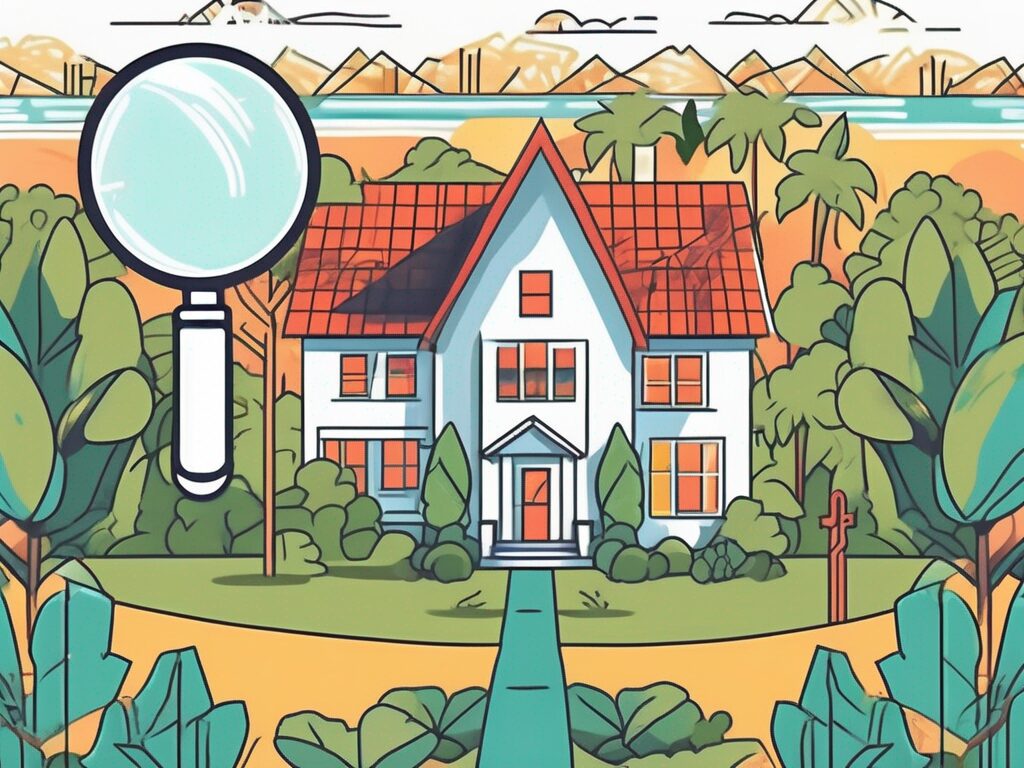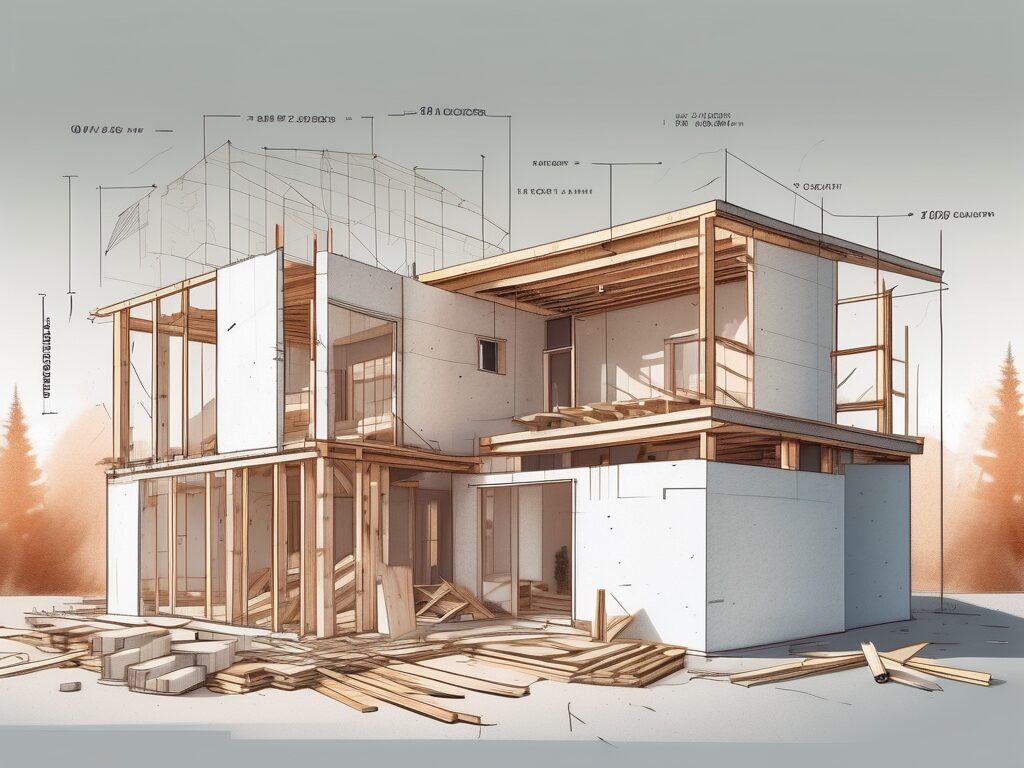
Agent A-Team or Solo Superhero? Finding the Right Real Estate Partner for Your Selling Journey in Wildwood Florida
When it comes to selling your home in Wildwood, Florida,…
January 29, 2024
Building your dream home is an exciting and fulfilling journey. One of the crucial decisions you’ll face is determining the size of your house. For many homeowners, a 1,500 square foot home strikes a perfect balance between space and affordability. In this article, we’ll explore the size, cost, and investment potential of a 1,500-square-foot house, helping you make an informed decision on your dream abode.
Before delving into the cost considerations, let’s first take a closer look at what you can expect from a 1,500-square-foot house. This size offers ample living space for a small to medium-sized family, with enough room for three to four bedrooms, two bathrooms, a kitchen, a living room, and potentially a garage or a patio. It strikes a balance between providing enough space for comfortable living while remaining cost-effective.
When designing your 1,500-square-foot house, it’s important to consider the layout and functionality. Smart floor plans, efficient use of space, and innovative storage solutions can maximize every square foot. Utilizing open floor plans and multi-purpose rooms can create a sense of spaciousness and versatility, making your house feel larger than its actual size.
Beyond the structural considerations, a 1,500-square-foot house allows for a comfortable lifestyle without excessive maintenance. It strikes a balance between having enough space for your family and reducing the time and effort required for cleaning, upkeep, and home maintenance tasks.
Now, let’s dive deeper into the layout of a 1,500-square-foot house. With three to four bedrooms, you have the flexibility to accommodate a growing family or create dedicated spaces for hobbies and guests. Imagine having a master bedroom with an ensuite bathroom, providing you with a private oasis to relax and unwind after a long day.
The kitchen in a 1,500-square-foot house can be a hub of culinary creativity. With ample counter space and storage, you can easily prepare delicious meals for your family and entertain guests. Imagine the aroma of freshly baked cookies filling the air as you gather around the kitchen island, creating memories that will last a lifetime.
When it comes to the living room, you have the opportunity to design a cozy and inviting space. Picture yourself curled up on a comfortable sofa, surrounded by your loved ones, watching your favorite movie or engaging in lively conversations. The open floor plan allows for seamless flow between the living room, kitchen, and dining area, making it perfect for hosting gatherings and creating a warm and welcoming atmosphere.
But a 1,500-square-foot house is not just about the indoor spaces. You can also enjoy the benefits of outdoor living with a potential garage or patio. A garage provides you with a secure place to park your vehicles and store your tools, while a patio offers an extension of your living space, where you can relax and enjoy the fresh air. Imagine hosting barbecues and summer parties on your patio, surrounded by lush greenery and the laughter of friends and family.
Furthermore, a 1,500-square-foot house allows for efficient maintenance. With less square footage to clean and maintain, you can spend more time doing the things you love and less time on household chores. This size strikes a balance between having enough space to live comfortably and minimizing the effort required to keep your home in pristine condition.
In conclusion, a 1,500-square-foot house offers a well-rounded living experience. It provides ample space for a small to medium-sized family, with room for bedrooms, bathrooms, a kitchen, a living room, and potentially a garage or patio. By maximizing the layout and functionality, you can create a sense of spaciousness and versatility. With the right design choices, you can make your house feel larger than its actual size. Additionally, the reduced maintenance requirements of a 1,500-square-foot house allow you to enjoy a comfortable lifestyle without excessive upkeep. So, whether you’re starting a family or looking to downsize, a 1,500-square-foot house can be the perfect fit for your needs.
When it comes to the cost of building your dream home, several factors come into play. The average cost to construct a 1,500-square-foot house varies across different regions due to variations in labor costs, material prices, and local building codes.
In areas with a higher cost of living, such as major metropolitan areas, you can expect higher construction costs for your 1,500-square-foot house. The demand for skilled labor and the availability of construction materials can drive up the expenses. Additionally, the cost of land in these areas tends to be higher, further impacting the overall cost.
On the other hand, in more rural or suburban areas, the overall expenses might be comparatively lower. Lower land costs and less competition for labor can contribute to reduced construction costs. However, it’s important to consider the availability of skilled workers and the distance from suppliers, as these factors can affect the project timeline and budget.
Furthermore, regional differences in material availability and transportation costs can impact the overall cost. Some materials may need to be sourced from distant locations, increasing transportation expenses. Additionally, certain regions may have limited access to specific construction materials, requiring alternative options that can affect the budget.
It’s essential to research and consult with local contractors or architects to get accurate estimates that align with your specific location. They will have a better understanding of the local market conditions, building regulations, and can provide insights into cost-saving measures or alternative materials that can help you achieve your desired budget.
Understanding the breakdown of construction costs is crucial to managing your budget effectively. By gaining insight into the various components that contribute to building expenses, you can make informed decisions and ensure that your project stays within financial parameters. While the exact figures may vary, the key components of construction costs generally include:
The first significant cost component is land acquisition. This expense encompasses the cost of purchasing or securing the land where you plan to build your house. Factors such as location, size, and zoning regulations can influence the price of the land. It is essential to carefully evaluate these factors to find a suitable plot that meets your needs and budget.
Once you have acquired the land, the next step is to hire an architect and obtain detailed blueprints for your dream home. Architectural design fees can vary depending on the complexity of the project, the reputation of the architect, and the level of customization desired. Collaborating with an architect ensures that your vision is translated into a functional and aesthetically pleasing design.
Before construction can commence, the land needs to be prepared. Site preparation expenses include clearing the land, leveling the ground, and making it ready for construction. Factors such as the topography of the site and the presence of trees or other obstacles can influence the cost of site preparation. Proper site preparation is crucial for ensuring a solid foundation and a smooth construction process.
The foundation and framing of a house form its structural framework. This cost component includes the expenses associated with laying the foundation, constructing the walls, and installing the roof. The materials used, such as concrete, steel, or wood, as well as the complexity of the design, can impact the cost of this phase. A sturdy foundation and well-built frame are essential for the long-term stability and durability of your home.
Installing plumbing, electrical wiring, HVAC systems, and other necessary utilities is another significant cost component. The complexity of the systems, the size of the house, and the energy efficiency requirements can influence the expenses. Proper installation of these systems ensures the comfort, safety, and functionality of your home.
Once the structural elements are in place, it’s time to focus on the interior finishes. This cost component includes selecting and installing flooring, cabinetry, countertops, fixtures, and other interior elements. The materials chosen, such as hardwood, tiles, or granite, as well as the level of customization, can impact the overall cost. Interior finishes play a crucial role in defining the style and ambiance of your home.
The exterior finishes of a house contribute to its curb appeal and overall aesthetics. This cost component encompasses expenses for exterior siding, roofing, painting, landscaping, and other elements that enhance the visual appeal of your home. Factors such as the choice of materials, architectural style, and landscaping design can influence the cost. Investing in high-quality exterior finishes can significantly enhance the value and attractiveness of your property.
Throughout the construction process, various permits and inspections are required to ensure compliance with building codes and regulations. This cost component includes the fees associated with obtaining the necessary permits and undergoing inspections. The specific requirements and fees can vary depending on the location and the scope of the project. Adhering to the necessary permits and inspections is essential for a smooth and legally compliant construction process.
It’s important to note that these are just some of the significant cost components involved in construction projects. Depending on your specific project’s requirements and location, additional expenses may arise. Examples of such expenses include landscaping, security systems, custom features, and specialized equipment. By carefully considering these factors and working closely with professionals, you can develop a comprehensive understanding of the breakdown of construction costs and effectively manage your budget.
While building a 1,500-square-foot house certainly has its advantages, it’s essential to consider the investment potential as well. Factors such as location, market demand, and property values play a significant role in determining the long-term value and potential returns on your investment.
One of the key advantages of a 1,500-square-foot house is its affordability compared to larger homes. Building costs and maintenance requirements tend to be lower, allowing you to allocate your resources to other financial goals.
Additionally, a smaller house typically means lower utility bills, reduced cleaning and maintenance obligations, and a potentially smaller environmental footprint.
However, it’s essential to consider your lifestyle, future plans, and potential resale value when deciding on the size of your dream home. If you anticipate your family growing or foresee the need for additional space, it may be worth considering a larger house that can accommodate your future needs.
On the other hand, a 1,500-square-foot house can offer a cozy and intimate living experience. With careful planning and design, you can maximize the functionality and comfort of every square foot. Imagine a charming living room with a fireplace, where you can gather with loved ones on cold winter nights. Picture a well-appointed kitchen, where you can prepare delicious meals and create lasting memories with family and friends.
Moreover, a smaller house can provide a sense of simplicity and ease. With less space to fill, you can focus on curating a home that reflects your personal style and values. You can invest in high-quality materials and finishes, creating a space that exudes elegance and sophistication.
Another advantage of a 1,500-square-foot house is the potential for a more manageable and cost-effective landscaping. With a smaller yard, you can create a beautiful outdoor space without the need for extensive maintenance or excessive water usage. Imagine a charming garden with vibrant flowers, a cozy patio for outdoor entertaining, and a small vegetable patch where you can grow your own fresh produce.
Ultimately, whether a 1,500-square-foot house is a good investment depends on your unique circumstances and personal preferences. It’s important to carefully evaluate your financial goals, lifestyle needs, and long-term plans before making a decision. By considering all aspects of the investment, you can make an informed choice that aligns with your vision of a dream home.
Building your dream 1,500-square-foot house requires careful consideration of the size, cost, and investment potential. Understanding the size and layout expectations, as well as the regional variations in building costs, will help you navigate the construction process more effectively. By analyzing the breakdown of construction expenses and weighing the pros and cons, you can make an informed decision that aligns with your budget and lifestyle. Remember, your dream home is not just about size; it’s about creating a space that brings joy and comfort to you and your loved ones for years to come.

If you want the Richr team to help you save thousands on your home just book a call.
 Book a call
Book a call